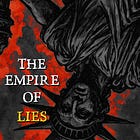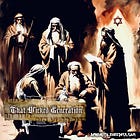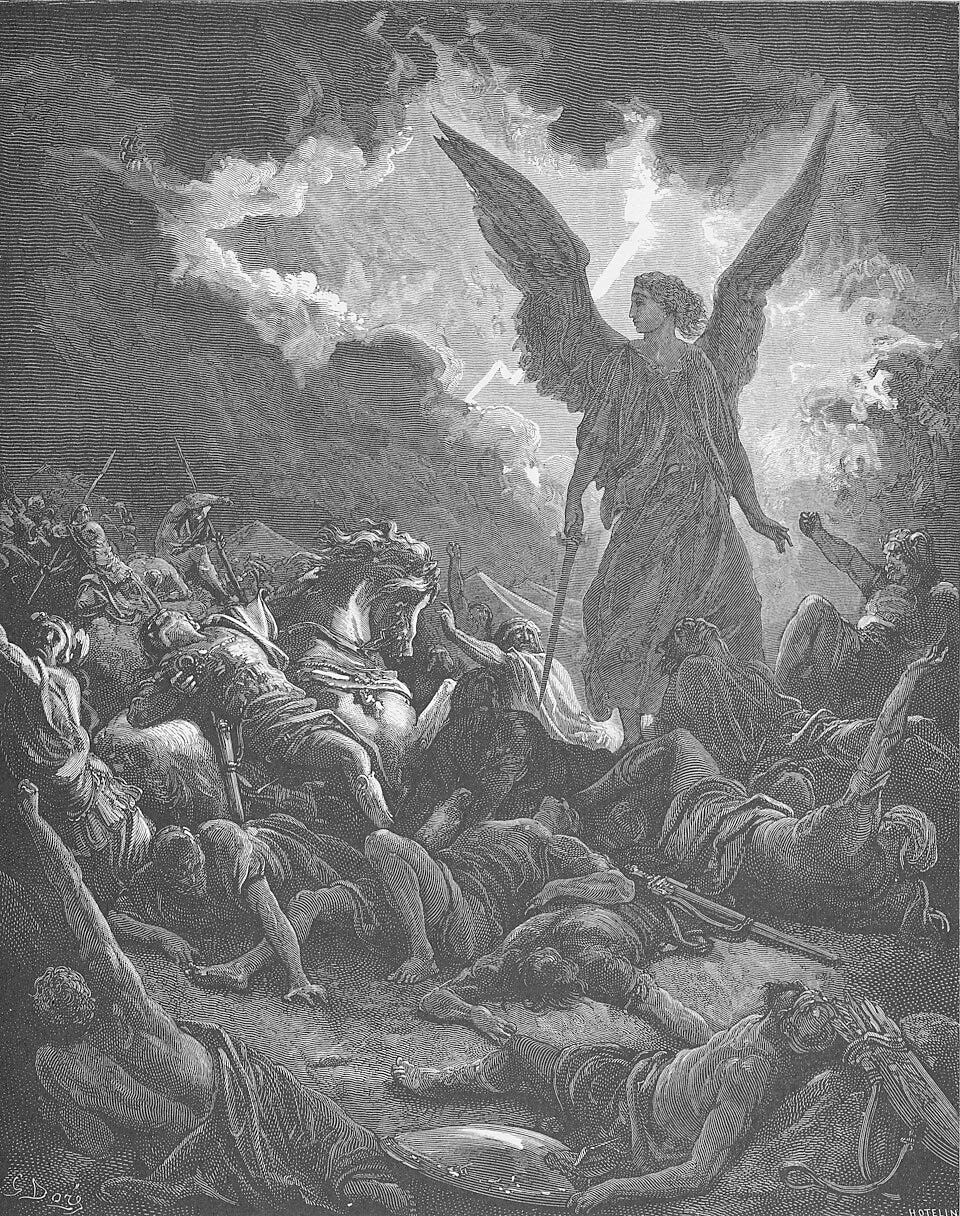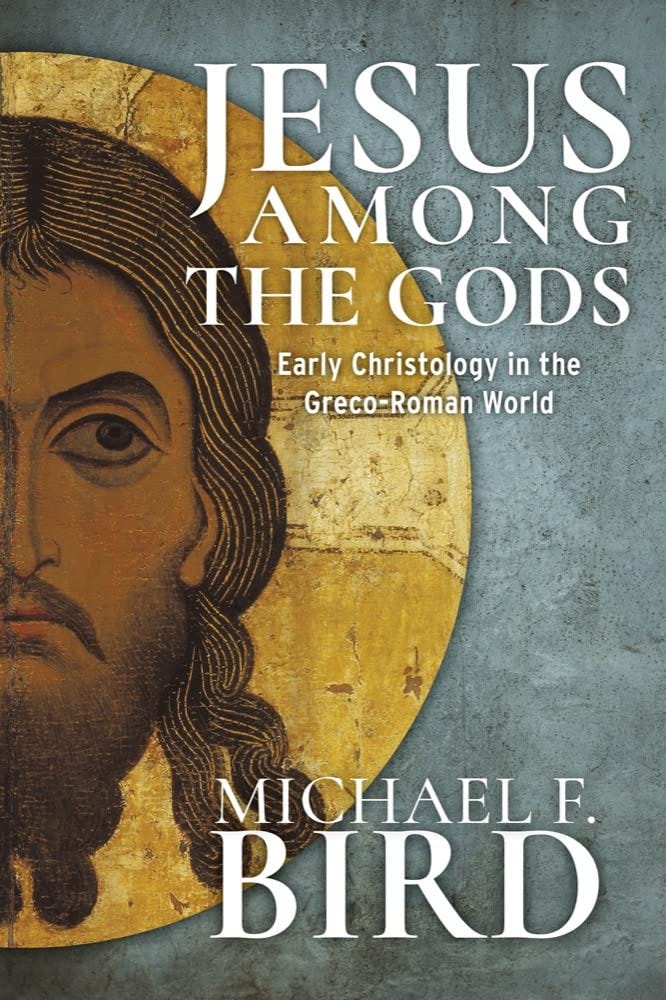The Quick & The Dead: Christ, Judge of the Æons (Part II)
An exegetical survey of the Judge of Mankind...
“The fear of the Lord is the beginning of wisdom: a good understanding have all they that do his commandments: his praise endureth for ever.”
— Psalm 111:10 KJV
Get Scipio’s latest book, The Empire of Lies: the American Empire unmasked.
Hit the Tip Jar and help spread the message!
This post contains affiliate links, which means I may receive a commission or affiliate fee for purchases made through these links.
Unlock the mysteries of Biblical cosmology and enrich your faith with some of the top rated Christian reads at BooksOnline.club.
Click the image below and be sure to use promo code SCIPIO for 10% off your order at HeavensHarvest.com: your one stop shop for emergency food, heirloom seeds and survival supplies.
Related Entries
Of all the Biblical imagery for judgement, the winepress motif is the most vivid: imagine as the harvest is gathered, grape clusters are thrown into large earthen vats, and bare feet apply pressure as the fragrant juices splash upon them. Across the Scriptures, the task of pressing out that divine wrath belongs to Him alone. He presses Edom in the open country and Jerusalem in her streets; He convenes court before the nations and bears the sickle of judgement. The Angel of the LORD, speaking and acting with uniquely divine prerogatives, enforces these verdicts throughout Israel’s history. John’s Apocalypse, building upon and exegeting this imagery for us, concentrates this language in the hand of The Son.
Isaiah declares whom it is that executes that wrath (emphasis mine):
1 Who is this that cometh from Edom, with dyed garments from Bozrah? this that is glorious in his apparel, travelling in the greatness of his strength? I that speak in righteousness, mighty to save.
2 Wherefore art thou red in thine apparel, and thy garments like him that treadeth in the winefat?
3 I have trodden the winepress alone; and of the people there was none with me: for I will tread them in mine anger, and trample them in my fury; and their blood shall be sprinkled upon my garments, and I will stain all my raiment.
— The Book of Isaiah 63:1-3 KJV
The prophet identifies the Treader; the first-person perspective closes every door to mere delegation: YHWH alone presses the vat. Solomon, predating Isaiah by centuries, confirms this too (emphasis mine):
The LORD hath trodden under foot all my mighty men in the midst of me: he hath called an assembly against me to crush my young men: the LORD hath trodden the virgin, the daughter of Judah, as in a winepress.
— The Book of Lamentations 1:15 KJV
In other words, the winepress proves both justice and consistency: YHWH shows no favoritism, for He is not a tribal or ethnic mascot but a universal and impartial arbiter.
Joel uses another striking symbol to describe this process: the sickle (emphasis mine):
11 Assemble yourselves, and come, all ye heathen, and gather yourselves together round about: thither cause thy mighty ones to come down, O LORD.
12 Let the heathen be wakened, and come up to the valley of Jehoshaphat: for there will I sit to judge all the heathen round about.
13 Put ye in the sickle, for the harvest is ripe: come, get you down; for the press is full, the fats overflow; for their wickedness is great.
— The Book of Joel 3:11-13 KJV
The venue bears its verdict in the name — Jehoshaphat quite literally means “YHWH judges.” For our argument, Joel supplies further thematic continuity: the sickle that reappears in Revelation is YHWH’s weapon placed, without apology, in the hand of The Son.
In exploring this theme, we find striking parallels in the prophecy of Jacob (emphasis mine):
8 Judah, thou art he whom thy brethren shall praise: thy hand shall be in the neck of thine enemies; thy father’s children shall bow down before thee.
9 Judah is a lion’s whelp: from the prey, my son, thou art gone up: he stooped down, he couched as a lion, and as an old lion; who shall rouse him up?
10 The sceptre shall not depart from Judah, nor a lawgiver from between his feet, until Shiloh come; and unto him shall the gathering of the people be.
11 Binding his foal unto the vine, and his ass’s colt unto the choice vine; he washed his garments in wine, and his clothes in the blood of grapes:
— Genesis 49:8-11 KJV
Both Christianity and Rabbinic Judaism recognize this particular prophecy as Messianic in nature. From the Targums to the medieval Jewish scholastics — all acknowledge that Shiloh is the Messiah. If the rabbis want “wine” in verse 11c to be prosperity, however, they must still reckon with its parallel “blood of grapes” — deliberately violent language that the Prophets later pick up and make explicit in the winepress motif, and no different than how the Psalmist frames Messianic rule.
Rabbinic Judaism concedes Genesis 49:10 is Messianic. By that concession it concedes the whole imagery of His reign: most damning, His garments washed in the proverbial blood of His enemies. That is the winepress before Isaiah names it, the vesture before John sees it dipped. The theme of the “winepress of His wrath” is one of many Christological nerves running throughout the Tanakh.
He is the Messenger who bears the Name, speaks as YHWH, receives worship, halts plague, and levels armies.
“49 For he that is mighty hath done to me great things; and holy is his name.
50 And his mercy is on them that fear him from generation to generation.
51 He hath shewed strength with his arm; he hath scattered the proud in the imagination of their hearts.”
― The Gospel of Luke 1:49-51 KJV
The seed of this commentary, the zenith of this motif, is Revelation 14: it is the passage that pulled the thread and unveiled to this author how thick Christology runs throughout the Scriptures.
Truly, as John later declares, “the testimony of Jesus is the spirit of prophecy” (Rev. 19:10). Language guarded for YHWH alone is applied, without apology, to The Son (emphasis mine):
14 And I looked, and behold a white cloud, and upon the cloud one sat like unto the Son of man, having on his head a golden crown, and in his hand a sharp sickle.
15 And another angel came out of the temple, crying with a loud voice to him that sat on the cloud, Thrust in thy sickle, and reap: for the time is come for thee to reap; for the harvest of the earth is ripe.
16 And he that sat on the cloud thrust in his sickle on the earth; and the earth was reaped.
17 And another angel came out of the temple which is in heaven, he also having a sharp sickle.
18 And another angel came out from the altar, which had power over fire; and cried with a loud cry to him that had the sharp sickle, saying, Thrust in thy sharp sickle, and gather the clusters of the vine of the earth; for her grapes are fully ripe.
19 And the angel thrust in his sickle into the earth, and gathered the vine of the earth, and cast it into the great winepress of the wrath of God.
20 And the winepress was trodden without the city, and blood came out of the winepress, even unto the horse bridles, by the space of a thousand and six hundred furlongs.
— Apocalypsis 14:14-20 KJV
Two themes appear at once: the cloud (YHWH’s chariot in the Old Testament) and the sickle. A white cloud bears the Son of Man; a crown rests on His head; a sharp sickle is placed in His hand; the earth (or alternatively, the land) is reaped. The same imagery Isaiah used for YHWH is now applied to The Son.
Josephus — no friend to the Church — preserves eyewitness testimony that reads like commentary notes on John’s vision (emphasis mine):
…when [the Romans] went in numbers into the lanes of the city with their swords drawn, they slew those whom they overtook without and set fire to the houses whither the Jews were fled, and burnt every soul in them, and laid waste a great many of the rest… they ran every one through whom they met with, and obstructed the very lanes with their dead bodies, and made the whole city run down with blood, to such a degree indeed that the fire of many of the houses was quenched with these men’s blood.
— Flavius Josephus, Wars of the Jews, Book VI, Ch. VIII, §5
Revelation 14:20 gives a measurement of the bloodshed: “a thousand and six hundred furlongs” (or σατδία/stadia). Using the standard ancient measure of ~180–185 m per stadion, that almost precisely matches the North–South span of Judea in the 1st century. In other words, John is mapping the winepress across the whole land, a prophecy that would find its frightful fulfillment in the Roman-Judean War.
— The Great Day of His Wrath, ill. by John Martin.
Within the theology of the ancient Hebrews, to ride upon the clouds serves as both a mark of divinity and a badge of office. Israel learned that language during the Exodus, where the presence that led their camp is alternately named as YHWH — “And the LORD went before them by day in a pillar of a cloud” (Exd. 13:21) — and as the Angel of God (emphasis mine):
19 And the angel [or messenger] of God, which went before the camp of Israel, removed and went behind them; and the pillar of the cloud went from before their face, and stood behind them:
20 And it came between the camp of the Egyptians and the camp of Israel; and it was a cloud and darkness to them, but it gave light by night to these: so that the one came not near the other all the night.
— The Book of Exodus 14:19-20 KJV
Just a few scant verses later, we are told once more that it is YHWH looking forth from within the cloud — “the LORD looked unto the host of the Egyptians through the pillar of fire and of the cloud” (v. 24). Moses is not confused here: he hands us — albeit, in a veiled form — the multiplicity within God that the rest of the Scriptures will continue unveiling. The Pentateuch establishes that unique prerogative in no uncertain terms: “There is none like unto the God of Jeshurun [Israel], who rideth upon the heaven in thy help, and in his excellency on the sky.” (Duet. 33:26)
The Torah insists that Israel’s God alone rides the heavens, and the Psalms are replete with such invocations (emphasis mine):
9 He bowed the heavens also, and came down: and darkness was under his feet.
10 And he rode upon a cherub, and did fly: yea, he did fly upon the wings of the wind.
11 He made darkness his secret place; his pavilion round about him were dark waters and thick clouds of the skies.
12 At the brightness that was before him his thick clouds passed, hail stones and coals of fire.
— Psalm 18:9-12 KJV
And yet, it also shows the Messenger inhabiting that same divine chariot. The glory cloud of Exodus requires a theology of God that can accommodate multiplicity without fracture — something which Unitarianism, rabbinic or otherwise, can not account for.
— Sennacherib’s Army Is Destroyed, ill. by Gustave Doré.
After King David numbered Israel’s fighting men, something which was expressly forbidden lest the nation be tempted to engage in foreign conquests, The Lord sent a pestilence that decimated Jerusalem. What David saw unfolding was extraordinary (emphasis mine):
15 And God sent an angel unto Jerusalem to destroy it: and as he was destroying, the LORD beheld, and he repented him of the evil, and said to the angel that destroyed, It is enough, stay now thine hand. And the angel of the LORD stood by the threshing floor of Ornan the Jebusite.
16 And David lifted up his eyes, and saw the angel of the LORD stand between the earth and the heaven, having a drawn sword in his hand stretched out over Jerusalem. Then David and the elders of Israel, who were clothed in sackcloth, fell upon their faces.
— 1st Book of Chronicles 21:15-16 KJV
The Hebrew word for evil, ra, does not necessarily refer to moral evil, and is better translated as destruction here. Not only does the Angel dispense this judgement, the description given for His sword alone paints His size as titanic in scope. In Isaiah’s time, when Jerusalem was under siege by Assyria, it was again “the angel of the LORD” who intervened decisively (Isa. 37).
Remarkably, a similar “sword” appeared before the fall of Jerusalem in 70 AD (emphasis mine):
Thus were the miserable people persuaded by these deceivers, and such as belied God himself; while they did not attend nor give credit to the signs that were so evident, and did so plainly foretell their future desolation, but, like men infatuated, without either eyes to see or minds to consider, did not regard the denunciations that God made to them. Thus there was a star resembling a sword, which stood over the city, and a comet, that continued a whole year.
— Flavius Josephus, Wars of the Jews, Book VI, Ch. V, §3
To early Christians, such a celestial sword would have immediately recalled the Angel with drawn sword over Jerusalem. It was as if God’s Messenger once again loomed over Jerusalem with sword unsheathed, warning of impending judgment.
The Apostle Paul removes the veil entirely for us. When he interprets the Exodus judgments, Paul states that it was Christ whom Israel tested in the wilderness (emphasis mine):
9 Neither let us tempt Christ, as some of them also tempted, and were destroyed of serpents.
10 Neither murmur ye, as some of them also murmured, and were destroyed of the destroyer.
11 Now all these things happened unto them for examples: and they are written for our admonition, upon whom the ends of the world are come.
— 1st Epistle to the Corinthians 10:9-11 KJV
In doing so, Paul identifies the Divine presence amongst the Israelites as the pre-incarnate Christ. In this chapter he refers to several episodes in the Exodus, such as Numbers 16, when the congregation’s rebellion led to a similar plague. Notably, Paul says they were destroyed “by the destroyer.” This echoes the Old Testament language for the “destroying angel” of the first Passover (seen in Exodus 12).
Paul’s point is profound: the same God who lovingly guided His people was also the one who disciplined and judged them – and that was Christ.
“And Moses said unto the people, Fear not: for God is come to prove you, and that his fear may be before your faces, that ye sin not.”
— The Book of Exodus 20:20 KJV
It begins, as so many judgments do, with Egypt. The air is thick with incense and the reek of idolatry. Priests lift their hands to lifeless gods while the True one rides a cloud across their sky. No one sees Him, yet every idol shudders; every heart melts (emphasis mine):
The burden of Egypt. Behold, the Lord rideth upon a swift cloud, and shall come into Egypt: and the idols of Egypt shall be moved at his presence, and the heart of Egypt shall melt in the midst of it.
— The Book of Isaiah 19:1 KJV
Isaiah is not describing a meteorological oddity but a metaphysical certainty: to “ride upon the cloud” is to make His presence judicially visible, to intervene in history. It can rightly be said that YHWH came to Edom, to Moab, to Nineveh, and rendered similar verdicts. This is the same language Christ deliberately uses in the Olivet Discourse (emphasis mine):
And then shall appear the sign of the Son of man in heaven: and then shall all the tribes of the earth [or land] mourn, and they shall see the Son of man coming in the clouds of heaven with power and great glory.
— The Gospel of Matthew 24:30 KJV
The same city that killed Him would see His power through its own annihilation: armies would surround Jerusalem, fire would consume her sanctuary, and the cloud of YHWH’s judgment would roll over Zion as once it had over Egypt.
To demand a literal, physical descent in those verses is to forget how the prophets spoke. Isaiah 13 described Babylon’s fall with nearly the same language Christ uses (emphasis mine):
9 Behold, the day of the Lord cometh, cruel both with wrath and fierce anger, to lay the land desolate: and he shall destroy the sinners thereof out of it.
10 For the stars of heaven and the constellations thereof shall not give their light: the sun shall be darkened in his going forth, and the moon shall not cause her light to shine.
11 And I will punish the world for their evil, and the wicked for their iniquity;
— The Book of Isaiah 13:9-11 KJV
It is hardly a controversial opinion that the celestial imagery here denotes political powers and turmoil, not actual celestial events. No futurist scholar claims the heavens literally collapsed in 539 B.C., and it is inarguable that the judgements prophesied here were indeed fulfilled. “Behold, I will stir up the Medes against them” (v. 17), identifies the agent of that judgement, the Medo-Persian empire, and verse 20 declares the duration of that judgement — “neither shall it be dwelt in from generation to generation.” A prophecy, I will note, which remains fulfilled unto the present day: indeed, the ancient city of Babylon lays barren and desolate.
This is why, despite the ubiquity of the term within the Christian lexicon, I find the term second coming somewhat unhelpful. Scripture speaks of the Lord’s comings — plural — each very real, yet not necessarily physical.
The delay between His judgments is a mercy, and while the world mistakes this silence for withdrawal, it is in truth divine restraint, for “the longsuffering of our Lord is salvation” (II Pet. 3:15). As the Scripture also says, “He is not willing that any should perish, but that all should come to repentance” (II Pet. 3:9), and that He takes “no pleasure in the death of the wicked; but that the wicked turn from his way and live” (Ezk. 33:11).
The argument resolves where it began: with the question of agency. Who treads the winepress? Who rides the cloud? Who judges the nations? Scripture allows only one answer: the Judge of Mankind is the same Divine Person who entered history as its Redeemer. Thus, the “comings” of God are successive unveilings of one Divine economy. He came to Egypt, to Babylon, to Jerusalem: He will come once more at the end of the Aeons.
That is the end toward which both Testaments flow — the unity of Judge and Savior, wrath and redemption, in The Eternal Son.
The Son of Man sits where only God sits; He wields what only God wields; He finishes what only God can finish.
— Kiss The Son, digital art, 2025.
“And unto man he said, Behold, the fear of the Lord, that is wisdom; and to depart from evil is understanding.”
— The Book of Job 28:28 KJV
Get Scipio’s latest book, The Empire of Lies: the American Empire unmasked.
Hit the Tip Jar and help spread the message!
This post contains affiliate links, which means I may receive a commission or affiliate fee for purchases made through these links.
Unlock the mysteries of Biblical cosmology and enrich your faith with some of the top rated Christian reads at BooksOnline.club.
Click the image below and be sure to use promo code SCIPIO for 10% off your order at HeavensHarvest.com: your one stop shop for emergency food, heirloom seeds and survival supplies.















Great article Scipio!! I somehow missed your first one in this series. The Judgments of God are one of the major themes in the Bible. In fact, I have a thick book by James Hamilton that argues that the Judgements of God are the main theme of the Bible. The images are powerful as you point out in this article: the Winepress of God's Wrath! Thanks for this great article. I will use these in my own lessons. Thanks.
Thank you for another brilliant piece, brother! In the few months that I've been following your essays, I have learned more about biblical symbolism and the interpretation thereof connecting OT & NT prophecy than I have in a lifetime of Catholic (before my utter rejection of Catholic theology), and then mainstream Christian study.
The type of understanding that you display regarding every aspect of scripture, and the words with which you present it to your readers in a way that enables even a complete stranger to scripture understand, is truly remarkable, and can only come from His Holy Spirit abiding in you! What a great gift He has bestowed upon you to be shared with the world - His Glory brought forth through the quill of your mind by His everlasting Word!
Godspeed, Scipio!